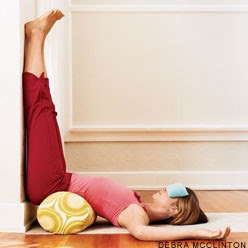
by Jason Crandell
Because we spend so much of our day hunched over a computer or moving forward, moving backward into a backbend is an unfamiliar feeling. And since our bodies and minds prefer to stick with the status quo, practicing backbends may trigger physical and psychological resistance. It's normal to feel frustrated, awkward, or even uncomfortable during your exploration of Cobra Pose and other backbends. Resistance is a natural part of breaking habits and moving into the unfamiliar, so be patient and compassionate with yourself. You aren't alone in your difficulty. With a little patience, curiosity, and practice, you'll learn how to navigate through your resistance. Here are a few suggestions for dealing with aversion and difficulty in backbends.
BEAR WITNESS Without immediately responding, observe the range of feelings that arise as you practice backbends. If there is a sharp, localized pain in your body, stop immediately. However, if you encounter mild physical or psych-ological resistance, be with it.Try witnessing your response to difficult feelings. Not only will you begin to see that resistance passes and transforms, you'll learn mindfulness, which is at the heart of the yoga practice.
SLOW DOWN Many of us go too far, too fast in our yoga practice. We prefer to accelerate through the learning, sensing, feeling process, and skip straight to the doing process. If you're having difficulty in a backbend, minimize the size of your backbend until it feels evenly distributed and healthy. Remember, you are searching for an even, graceful arc, not a visual spectacle. Besides, it's better to injure your ego than your body.
REPEAT REGULARLY The only way to learn a new pattern in the body and mind is to practice it consistently. Do backbends that feel appropriate to you as often as possible. Incorporate them into your yoga routine and daily life. You can do small backbends—like clasping your hands behind your back, lifting your chest, and simply stretching—sitting in your chair at work, waiting for the train, or standing in line at the grocer.
BE BRIEF It may be daunting to think about staying in a backbend for 30 seconds. But is it still scary if you hold it for, say, five seconds? Repeating your backbends more often and holding them for a very brief moment is an effective way to reduce your aversion.
BASK IN THE BEND Backbends are thought to be energizing, uplifting, and stimulating. After you finish a backbend, take a moment as you breathe to notice if your energy has changed. You may notice sensations immediately after a pose or later in the day—it will vary from day to day.
Jason Crandell would like to thank Nina Zolotow for her expertise and guidance. Contact him at www.jasonyoga.com.













